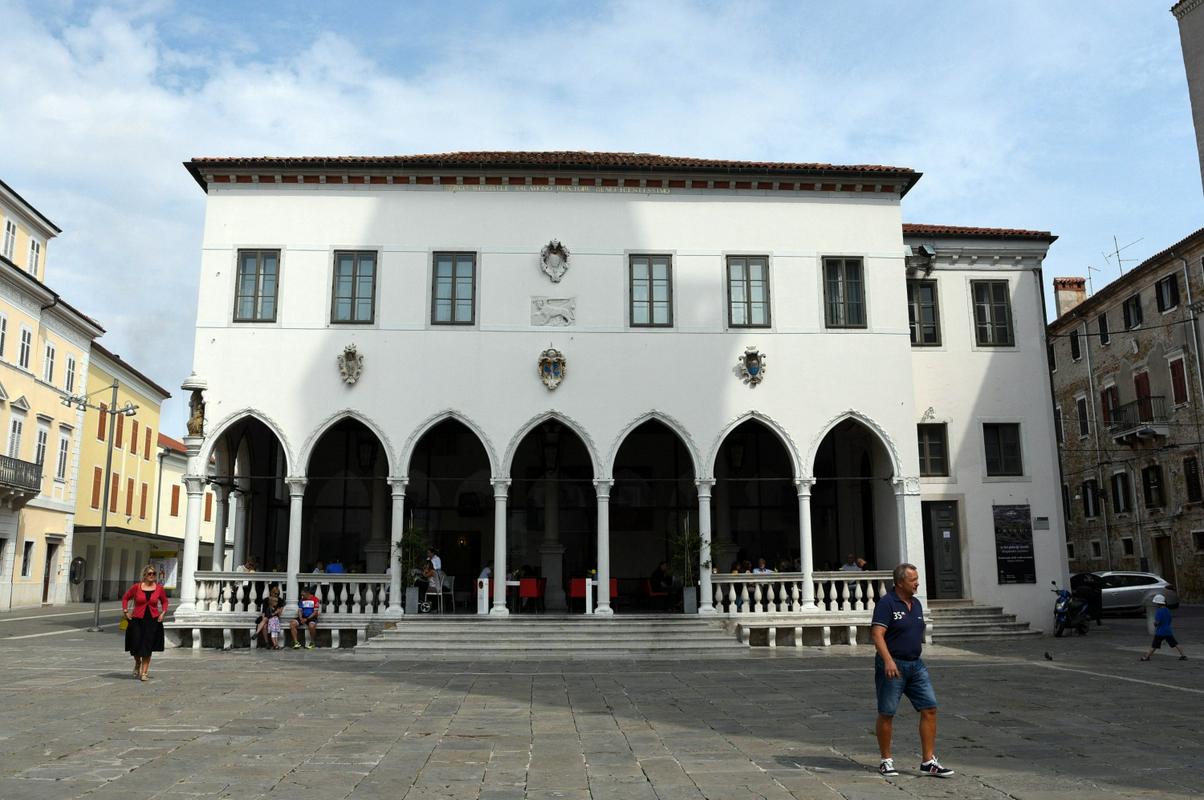
The first town hall was built on the spot, opposite the Praetorian Palace in central Koper, sometime in the 13th century. It housed the town council and symbolized the considerable autonomy Koper enjoyed under the Republic of Venice.
The oldest part of the current building dates back to the 15th century. That’s when the original building was completely reconstructed as a neo-Gothic structure with typically Venetian arches. Its facade was initially very simple, but in the decades after its construction, the municipal coat-of-arms was added, as was the image of a winged lion, which symbolized the Republic of Venice and its naval might. Both ornaments can still be seen today. But despite the stately appearance, the Loggia was not only a center of administration; it was also the focus of public life. The elites, then mostly Italian-speaking, would frequently organize debates in the building.
A 16th century terracotta sculpture of the Virgin Mary in a wall niche is a memorial to the time when Koper was ravaged by the plague. In the late 17th century, the Loggia was greatly expanded with the addition of an upper floor and new arches.
The building now houses a café, whose origins date back to the 19th century, and an art gallery. Centuries after it was built, it remains the spiritual heart of a community that still serves as Slovenia’s window to the world.


































































